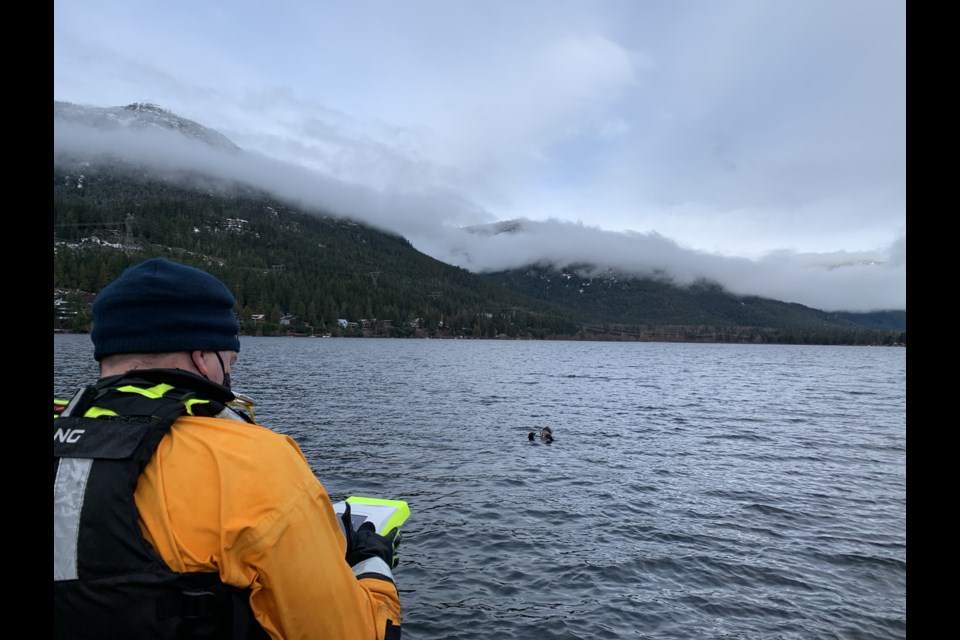Whistler’s first responders will have an extra eye underwater thanks to the acquisition of a sonar device that will be used in rescue and recovery efforts.
AquaEye is the first search-and-rescue device of its kind, a hand-held scanner that uses ultrasound and artificial intelligence to identify human bodies underwater. The device, manufactured by Vancouver-based VodaSafe, enables rescuers to quickly scan a scene and identify potential victims “within seconds of entering the water,” according to its website.
“The goal was to make it as simple as possible to use, durable and fast acting,” said Carlyn Loncaric, founder and CEO of VodaSafe. “You don’t even need to get into the water yourself. You can lean off the side of a dock or a boat, you put the unit in the water, you pull the trigger, it starts firing and sending sound pulses out, then that sound echoes off of objects in the water, the device picks them up and analyzes them. Then it shows on the screen where it believes people to be.”
The Whistler Fire Rescue Service acquired the portable device thanks to a $5,000 donation from GFL to Whistler Search and Rescue, which, along with the local RCMP and search-and-rescue groups across the Sea to Sky, will have access to the equipment as needed. (The donation was initially intended for the WFRS, but, being a municipal organization, it is not permitted to take donations.)
“I just know that it works quite well and it’s going to be really handy for logjams and places you wouldn’t dare put anybody in,” said Whistler Search and Rescue manager Brad Sills, who said search crews used the device this summer when a kayaker went missing in the Cheakamus River. The man was found deceased the day after he upturned his kayak in choppy waters.
Although drownings are relatively rare locally, Whistler deputy fire chief Chris Nelson said, “just one drowning is enough to make [the device] worthwhile,” and it will significantly cut down the time and risk associated with traditional underwater rescue or recovery missions.
“If someone drowns in our local waters, it’s our job to go out and do the best with what we have. In the past, we literally had nothing, other than the last person who saw the person go down in that location, and we begin our search from there. It’s quite futile,” he said.
Nelson also pointed to the drowning of 25-year-old Australian woman, Alison Raspa, who went missing in late November 2017. Despite her personal items being found nearby, and five separate underwater searches of Alpha Lake, she wasn’t discovered for nearly four months, after the frozen lake had begun to thaw. The BC Coroners Service ruled Raspa’s death a suicide in a March 2020 report.
“Had we had that tool, we could’ve scanned that body of water and found her. Not in time to save her but in time to put some closure on the whole thing for everybody,” he said.
With more people out recreating in the pandemic, this summer saw a rise in water-related emergencies. According to preliminary data from the B.C. and Yukon Branch of the Lifesaving Society, by late August, 32 people had drowned in B.C. this year, up a third from the same time in 2019. One of those drownings was a 20-year-old Vancouver man who died after being pulled from Alta Lake in July.
“Time is of the essence when you’re in the middle of a rescue or recovery,” said Loncaric.
For more information on the AquaEye, visit vodasafe.ca.




